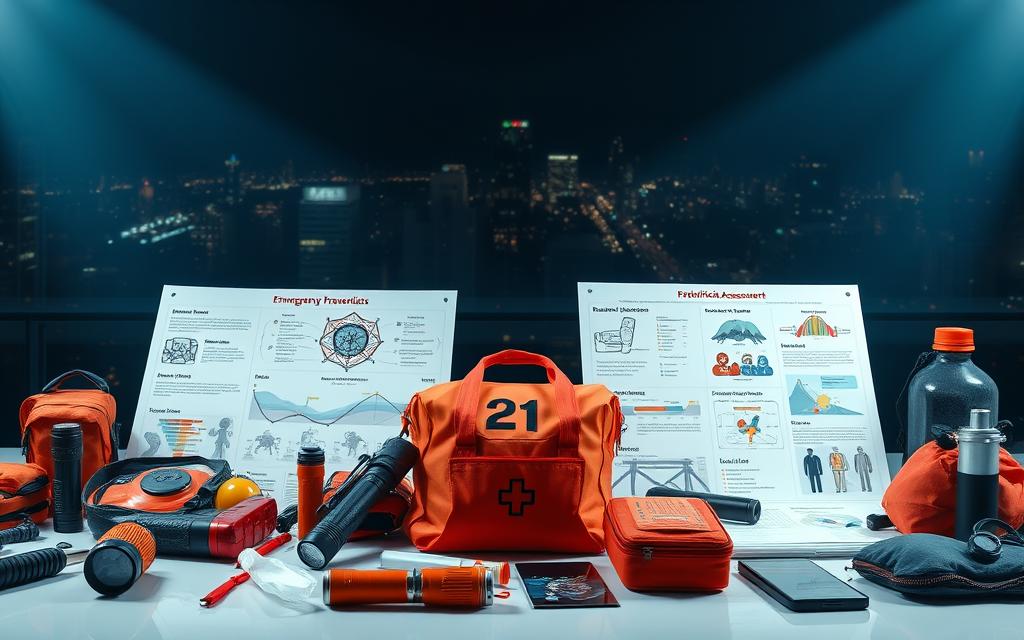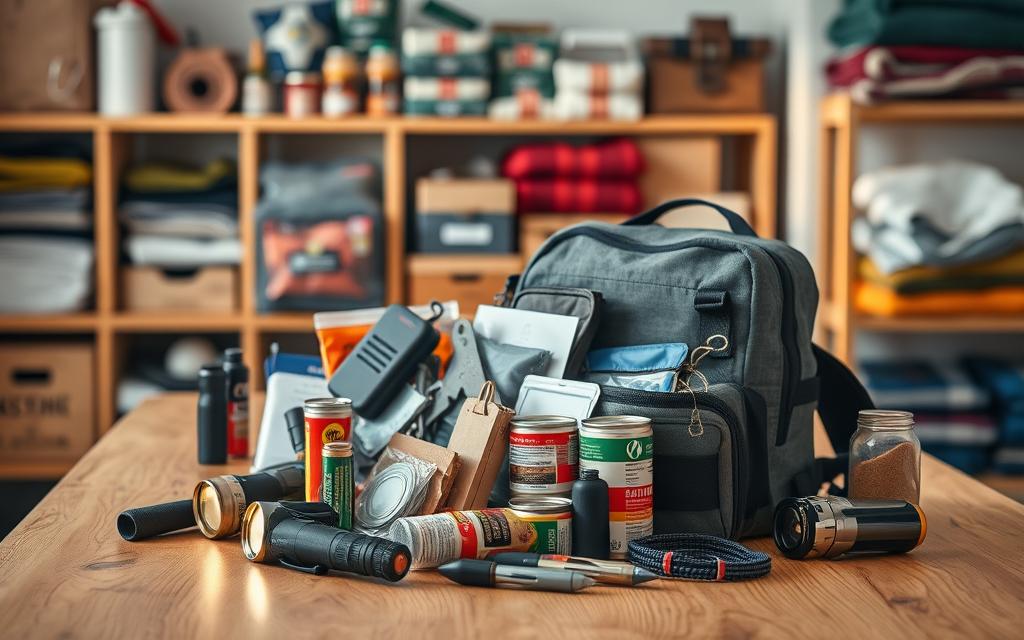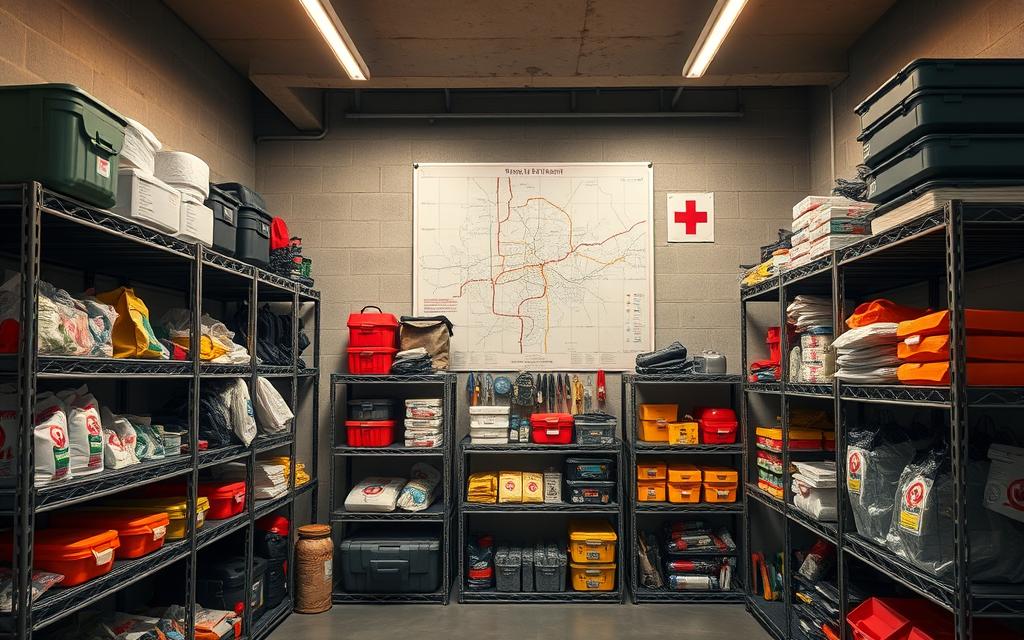Life can change in an instant. Storms, power outages, or other emergencies often arrive without warning. Being ready isn’t about fear—it’s about confidence. With a few simple steps, you can protect your family and home when disasters strike.
Imagine having enough supplies to last three days if stores close or roads are blocked. A well-stocked emergency kit gives you exactly that. It’s more than just a box—it’s your lifeline. Items like water (one gallon per person daily), non-perishable food, and a first aid kit are essentials.
Why does this matter? After a disaster, help might take hours or days to arrive. Having your own kit saves time and reduces stress. You’ll avoid scrambling for flashlights or bandages when every second counts.
This guide will walk you through building a reliable emergency plan. We’ll cover how to assess risks, organize supplies, and create easy routines. Let’s start with the basics—because being prepared means staying safe, no matter what tomorrow brings.
Understanding Preparedness Essentials
Emergencies don’t wait for a convenient time. Being ready means knowing how to respond when disasters like wildfires, hurricanes, or power outages strike. Let’s break down what you need to focus on first.

What Does Preparedness Mean?
Emergency preparedness is about having plans and supplies tailored to your household. Think of it as a safety net—water, food, and a first aid kit form the foundation. But it’s also about knowing local risks. For example, earthquakes require sturdy shelter, while floods demand evacuation routes.
Common Risks to Plan For
Every region faces unique threats. Coastal areas may deal with hurricanes, while others face tornadoes or wildfires. Check local policies and historical data to identify top concerns. Create a checklist like this:
- Non-perishable food (3-day supply)
- 1 gallon of water per person daily
- Medications and infant formula if needed
Customizing for Your Family
Does someone rely on medical devices? Do you have children or pets? Add extra batteries, comfort items, or pet food to your kit. Store contact numbers for doctors and relatives in waterproof pouches. Practice drills so everyone knows where to meet if separated.
Remember: A one-size-fits-all approach won’t work. Review your plan yearly to keep information current and supplies fresh.
Building Your Emergency Supply Kit
Your safety during a crisis starts with what’s in your supply kit. Whether facing a power outage or severe storm, having organized resources ensures you’re ready to act. Let’s explore what every household needs to stay resilient.

Essential Items: Food, Water, and First Aid
Start with basics that keep you alive. Store one gallon of water per person daily for at least three days. Non-perishable foods like canned beans or energy bars require no cooking. A first aid kit with bandages, pain relievers, and antiseptic wipes treats minor injuries quickly.
Include tools like a hand-crank radio for weather updates and a manual can opener. Flashlights with extra batteries prevent fumbling in the dark. Store everything in airtight bags inside durable plastic bins to protect against moisture.
Supplemental Supplies for Special Needs and Pets
Tailor your kit to your family’s unique needs. Prescription medications, infant formula, or spare glasses may need added space. Pet owners should pack extra food and leashes. Don’t forget comfort items—a deck of cards or kids’ books can ease stress.
Update your emergency kit every six months. Replace expired items and adjust supplies as needs change. A well-maintained kit works best when disasters strike unexpectedly.
Implementing Practical Preparedness Strategies
Staying safe means thinking ahead—wherever you are. Tailoring your emergency plans to home, work, and travel ensures you’re ready for sudden disasters. Let’s explore how to build systems that work in real-life scenarios.

Custom Kits for Every Location
Store supplies in three key spots: home, vehicle, and workplace. Home kits should cover basics like water and first aid. Car kits need jumper cables and blankets. At work, keep a “grab-and-go” bag with snacks, a flashlight, and spare medications.
Quick Action Plans Save Time
Assign roles to family members during crises. Kids can grab their go-bags, while adults handle shut-off valves or pets. Practice drills monthly so everyone knows where to meet if separated. Choose two meeting spots: one nearby and another outside your neighborhood.
Keep Supplies Fresh and Functional
Mark your calendar to check kits every six months. Replace expired food, test flashlights, and update contact lists. Add seasonal items like sunscreen or hand warmers as needed. A 5-minute check today prevents frustration during a real emergency.
Simple habits make preparedness effortless. Rotate water bottles when daylight saving time changes. Store copies of insurance papers in waterproof sleeves. With these steps, you’ll turn “what if” worries into confident action.
Conclusion
Peace of mind starts with preparation. By understanding local risks, building a tailored emergency kit, and practicing response plans, you’re already ahead of the curve. Remember: three days of water, non-perishable food, and a first aid kit form the backbone of any strategy.
Regular updates keep your supplies fresh and plans relevant. Review your family’s needs every six months—especially if you have young children or pets. Store community-level resources in your contact list, as neighbors often become first responders during disasters.
For added resilience, consider tools like solar chargers or EMP-shielding materials. These extras complement basics like flashlights and radios, ensuring you’re ready for anything from power outages to severe storms.
Start small. Update one part of your home kit today, then tackle car and workplace supplies later. With each step, you’ll transform uncertainty into confidence—because when emergencies strike, preparation makes all the difference.
